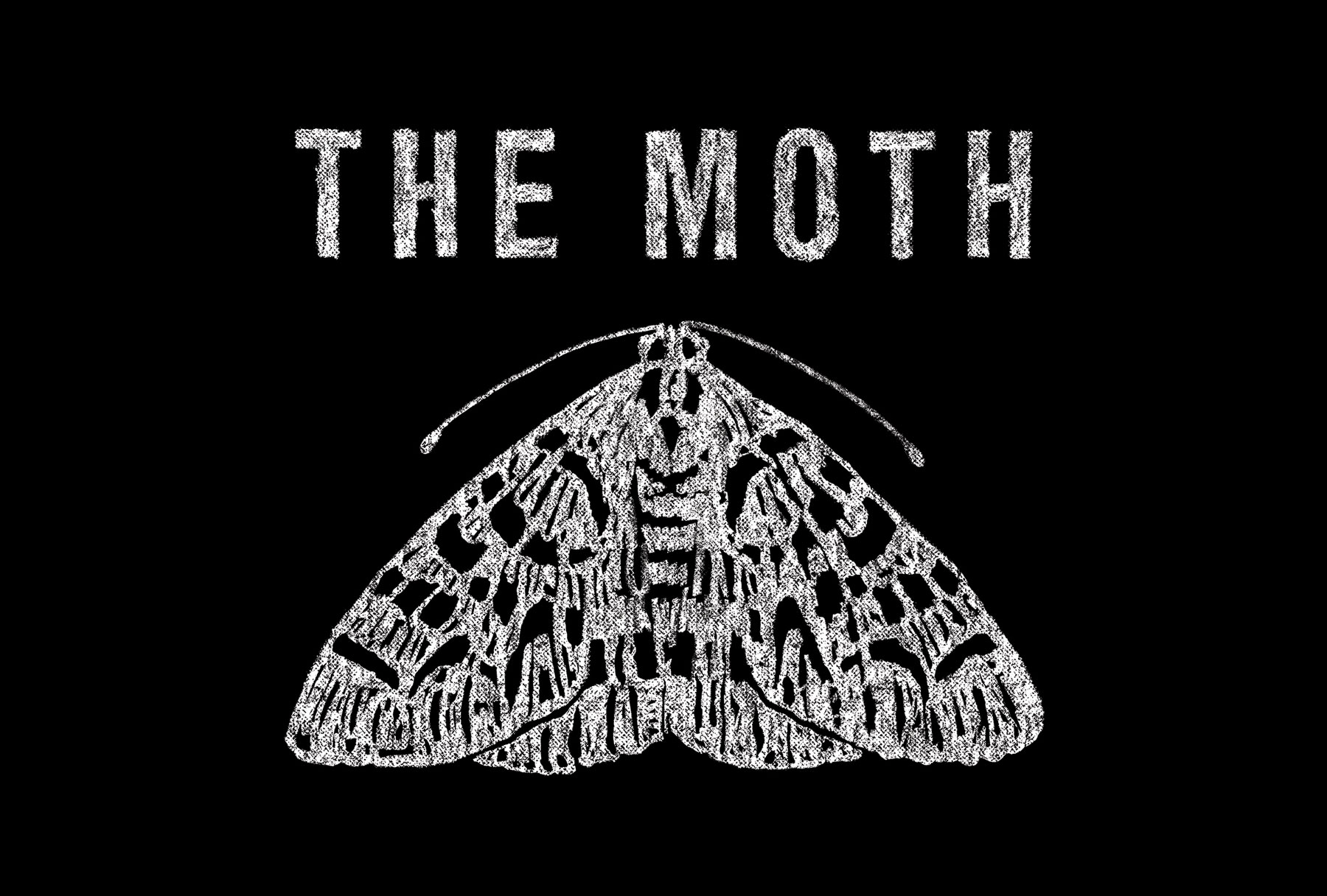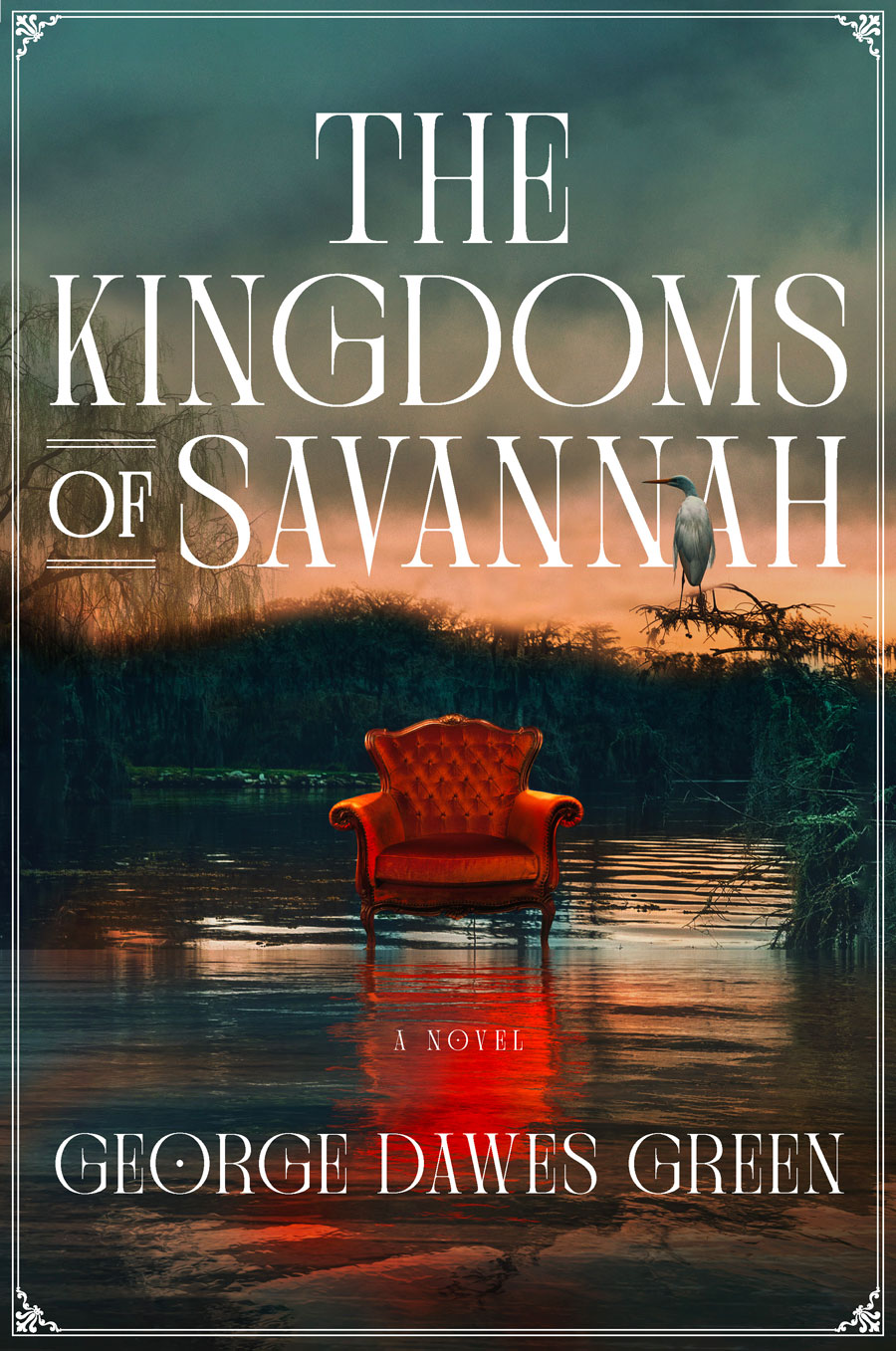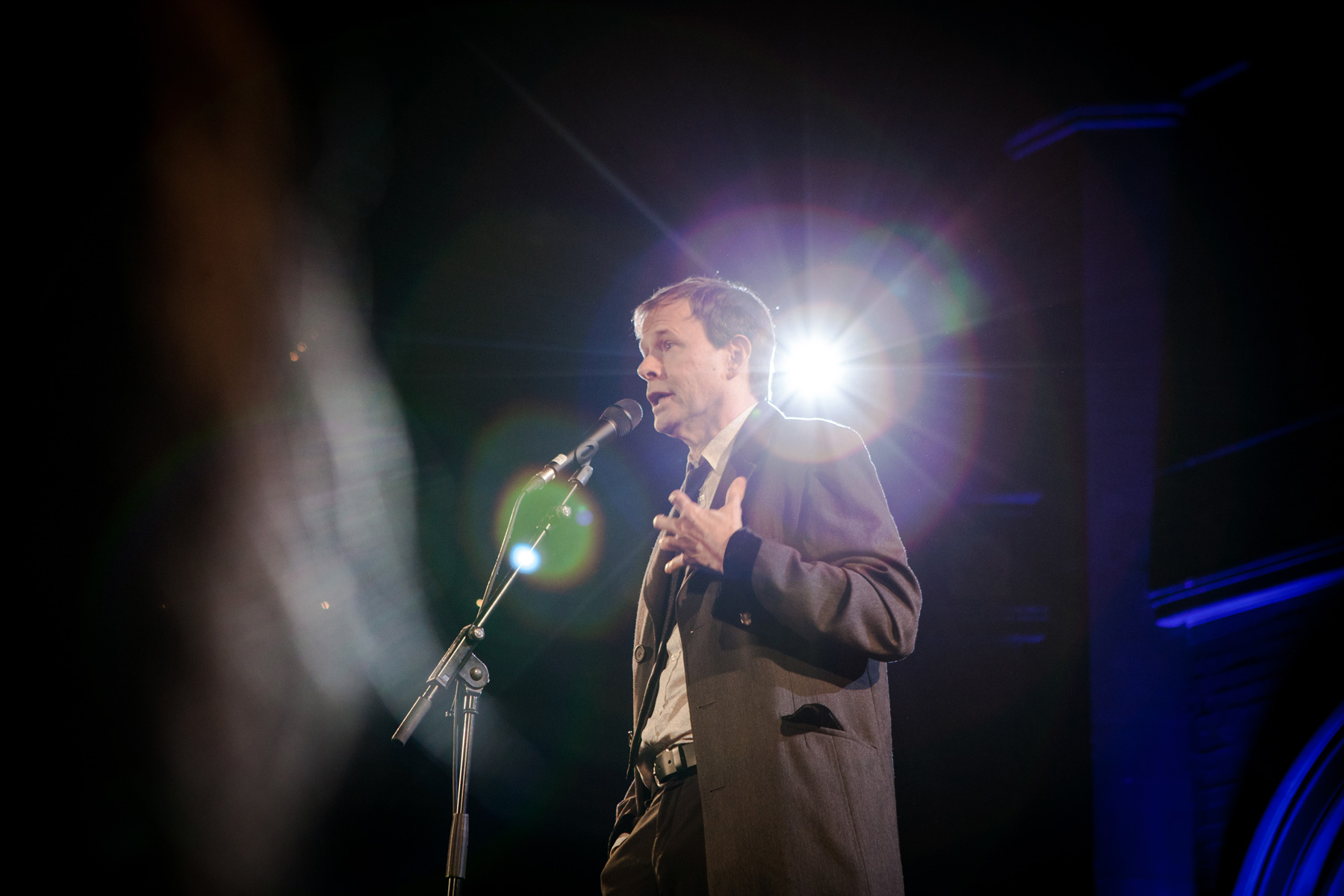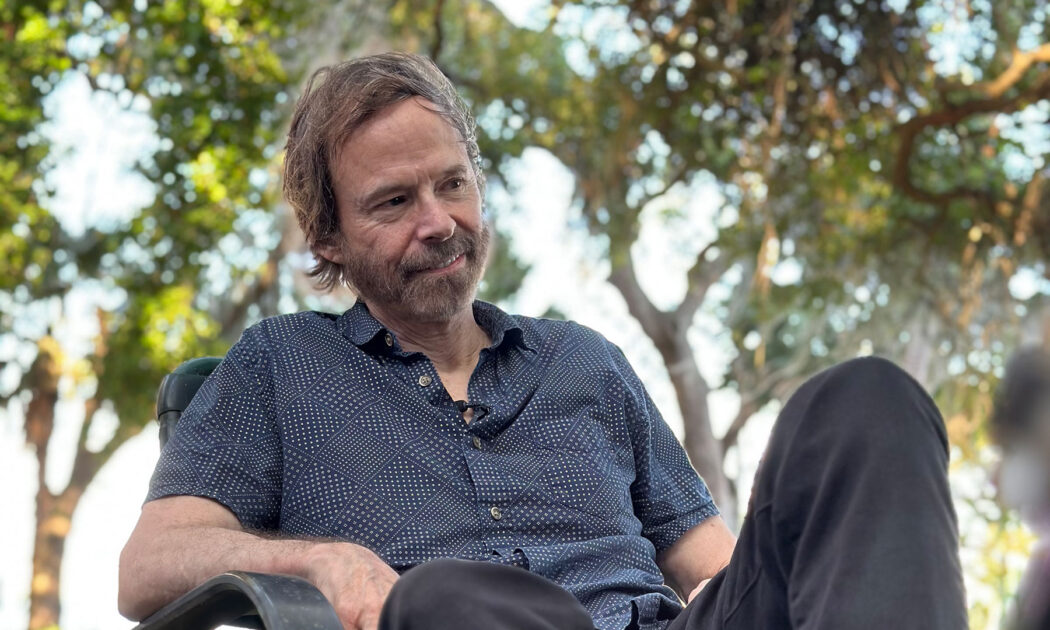A conversation with George Dawes Green, founder of The Moth
George Dawes Green knows his way around a story—as you would probably expect of a person who created a nonprofit dedicated entirely to the art and craft of storytelling. And an author whose one of many award-winning mystery novels inspired a film starring one Samuel L. Jackson. We digress. The aforementioned nonprofit found its roots on the porches of South Georgia where George and a band of friends later dubbed “The Moths” would rattle off stories late into the night. And since the best ideas tend to come from late-night shenanigans typically with a beer or two in hand (don’t quote us on that), it’s only natural that this tradition inspired The Moth, a hub for people from all walks of life to tell their stories in front of live audiences. A little more ambitious than your average group of drinking buddies.
George was kind enough to put down the pen for a couple of hours to share some tricks of the trade with us and shine some light on the beginnings of his insect-inspired brainchild.
…there’s something about our evolution: we really start listening to a story when the decision point arrives. That’s when our minds reach out to other minds. And it’s amazing that sort of transference where we all feel that we are living that experience we’re hearing…
What are the most important elements of telling a story?
George Dawes Green: Well, I think a great story always hinges around a decision. Storytellers often think that stories depend on a lot of things that happen to them. And so when people tell you stories, the story will be about the things that happened to them. And it might be they went on a trip and at the airport, oh, they got delayed, and then their bags turned up in the wrong place. But those things aren’t really very interesting. What’s really interesting are the decisions that people make.
Once this came to me clearly when someone at a bar started a story like this: “I was on a trip, it was snowing and my car started to skid, and it just kept skidding and turning around and around on the highway.” And I was thinking, “Well, I know he survived this, but still, it’s sort of interesting.” But then he said, “But then, the car went over the bridge and it went underwater. And then I was underwater and the window was rolled up. But I knew that if I was going to get out of there, I’d have to roll the window down.” This was in one of those old cars where you had a crank. And he said, “roll the window down, but if I do the water will come rushing in. And I’ll probably drown, so maybe I should just leave it up and wait to be rescued.'”
And the moment he told that part of the story, I was riveted, because now it wasn’t just things happening. Now I was inside. And I think you always find that when stories get really good, it’s because our brains get completely captured by someone’s voice to where we think that we’re the ones who are undergoing this travail, and we’re the ones who have to make this decision. So I always find it amazing how when we’re directing Moth stories, we look for the decision that’s at the core of the story. And once you really understand that decision and everything that goes into that decision, then you’ll understand how to build a great story. So the first thing is to look for the decision in your story. What did you decide? And how did that affect your life? How did it affect the lives of the people around you?
And then there’s something about our evolution: we really start listening to a story when the decision point arrives. That’s when our minds reach out to other minds. And it’s amazing that sort of transference where we all feel that we are living that experience we’re hearing, which is why you can get people to cry out in the middle of the story in terror or surprise. Because if you’re a really good storyteller, you get into your decision-making process, and then everybody will go there with you.
The other thing that I’d say is huge is vulnerability and showing the audience that you are just a human being. When raconteurs try to suggest they’re in any way special—well, that doesn’t work. The best storytellers generally have the most humility. The most sense of: “This is me, the clown, screwing up again.”
How do you think a story changes when it’s told orally versus read out loud from a script, or just read to oneself on a page?
GDG: It’s like night and day. I’m a novelist, that’s my life—I love to write and I love to read. But I don’t necessarily love to read Moth stories. I’m glad that they’re out there for people to discover, but to me, it’s about the actual performance of the story. There’s just something about when a Moth storyteller is really good—sometimes they memorize the basic beats of their story, but they’re always riffing on those beats, and they’re always taking the story in slightly different directions. They’re baking up the story as they serve it. And that’s what makes it a riveting performance. And when it’s done really well, it’s one of the great art forms. There’s nothing like a great story being told by a master.

Why “The Moth”? How has the meaning of the name evolved for you since its inception in the late 90s?
GDG: The way we’re drawn to great stories, the way we surrender to great stories, reminds me of moths drawn to a light. When I was a boy, I had a love for stories told on late-night television. I’d sneak down to the living room and turn on the TV and watch people like Jack Paar, who would every now and then have a great storyteller on, like Jimmy Breslin, a New York reporter who could just weave a great story. And then you’d get ten minutes of a fabulous story.
I also fell in love with Danish writer Karen Blixen who wrote under the name Isak Dinesen. And her short stories feel as though they’re being told to us. And they’re devastatingly beautiful, so I fell in love with the form when I was a boy.
Then when I was grown I used to love poetry slams, and one night I was at a poetry slam, and a woman was reciting a certain kind of artful, singsong, surrealistic poem: “The six-pack…of my father’s despair, in the attic…of my shoeshine, where the glitter…and slither…of trauma red as pizza pies…” And so forth. And everyone was nodding off. And then the poem ended and she was introducing the next poem, and she said, in her real voice, her natural voice, something like: “My next poem is about when I was a kid. My grandfather would wake me early in the morning, really early like before dawn, and we’d get into his station wagon—one of those old station wagons with wooden sides. We’d drive up through the Bronx to a trout stream up in Westchester County, and it would be really early morning, mist everywhere, and I’d be really sleepy, but we’d cast for these brown trout.” And the moment she started telling that story, I perked up, and the whole audience perked up, because she wasn’t being an artist anymore. There wasn’t that veil between the artist and the audience. It was just her telling the story. And we were completely enraptured. And so I remember going to the host of the Slam, Bob Holman, who is still my dear friend, and I said, “Hey, Bob, what about if we have a night of the stories poets use to introduce their poems, without the poems?” And he thought I was kidding. And partly I was.
But years later I decided, “Oh, I’m going to do that.” I grew up in the South, where we would tell stories late at night, and I wanted to honor those porches, and those stories, and the moths that would fly around obsessing over the porch light.
Favorite bedtime story as a child?
GDG: Well, I do remember—not bedtime stories because I was a bit older, but stories from my dad. He was an extremely quiet man, but sometimes early in the evening, when he had a drink, he’d become more voluble. Later during the night he and my mother would get drunk and have terrible fights. But there was always this sort of golden hour, when he had one drink, before he finished the second when he was very, very lucid and his memory was crystal sharp. And he would take me back through his memories of growing up in Ohio near Cincinnati on the Ohio River and going out onto the river with his friends. He had a lot of adventures to tell me and I loved to hear those stories.
On the other hand, my mother’s side of the family were Southerners. When I was 11 or so, we would go up to Savannah. Mom would drive up on Sunday afternoons, she’d put on this fancy hat, and we’d get into her Chevrolet Bel Air, as large as an aircraft carrier, and go cruising up Route 17 to the city of Savannah. Then we would go to visit our cousins. My mom’s name was Inez and most of our cousins were named Inez—we would sit around with these little old ladies, some second cousins, first cousins once removed, and they would share all of these stories of Savannah, the old days, and what they called the “good old days,” which weren’t.
They were beautiful stories mingled with horror. I had the sense that they were indulging in these sweet recollections without being honest or true. But that’s where I began. Those stories and my dad’s stories, completely different streams that went into me thinking about becoming a writer.

What’s the story behind your most recent novel, “The Kingdoms of Savannah”?
GDG: A lot of the stories that I gathered as a child are poured into that book. It is a contemporary thriller, but really is about how stories shape the character of that city. These stories from the coast of Georgia, they were also an inspiration for The Moth. These incredibly rich stories that are usually laced with some element of Southern Gothic. Something really horrific often comes down in these stories—but we somehow survive to tell them.
What makes these South Georgia stories so distinct?
GDG: First of all, there’s a strain of propriety. There are these beliefs that, “This is the proper way to live.” And those rules are really rigorously enforced, except nobody really follows them. So all those rules are being broken in weird ways and there’s a lot of hypocrisy. And it’s overlaid with a terrible caste system and injustice and inequality.
Crime is at the heart of a lot of your novels. Why is that? Why do you think humans are so drawn to these tales of thriller and crime?
GDG: I think when we hear, or read, a great story, part of us knows the tale isn’t happening to us, but another part surrenders, lets the storyteller’s voice take us over. And we experience all these visceral thrills, all these emotions, but without any real danger. At the story’s end we get to walk away. I don’t think anybody really has any answers. But I guess that’s why we love to do that.
The great Moth storytellers tell stories about their about their own moral ambiguity and confusion, and how, at the end, they don’t know if they did the right thing or not. And these are the stories that I find compelling again and again.
Best storyteller you know and why?
GDG: Edgar Oliver. He’s one of our South Georgia people who tells stories about Savannah. His stories are about growing up with his sister and his deeply troubledmother. And you can just go back and just listen to Edgar Oliver. He’s got a very amazing, unusual voice. And he’s also become a dear friend throughout the years. But I think he’s the greatest living raconteur. We produced his one-man show, “Helen and Edgar” and took it around the world. And it moves me every time I see it. The pure distillation of the art of storytelling. He’s amazing.
There are many others. Sheri Holman tells beautiful stories. She’s a brilliant novelist and she writes superb television shows, but her voice—Southern, wise, playful, dazzling.

Do you think that humans have a responsibility to tell their stories, and to use them as lessons for future generations?
GDG: I feel that people should be careful about the idea of stories as lessons. I think what The Moth is saying is, “Don’t do that.” The great storytellers at The Moth don’t really understand their stories—we don’t know what the lessons are. The very best Moth stories don’t end with, “And then I realized this and this and this…” The great Moth storytellers tell stories about their about their own moral ambiguity and confusion, and how, at the end, they don’t know if they did the right thing or not. And these are the stories that I find compelling again and again.
We honestly don’t understand anything that we’re doing—we’re just trying to do our best to make it from day to day. And in the midst of that, storytellers that come out with these clear, bad and good things—I find them to be terribly weak. But the storytellers who were just searching, that’s very beautiful.
Listen to some of the neat humans at The Moth tell neat stories here, here or here. And maybe snag a copy of “The Kingdoms of Savannah” here while you’re at it.

